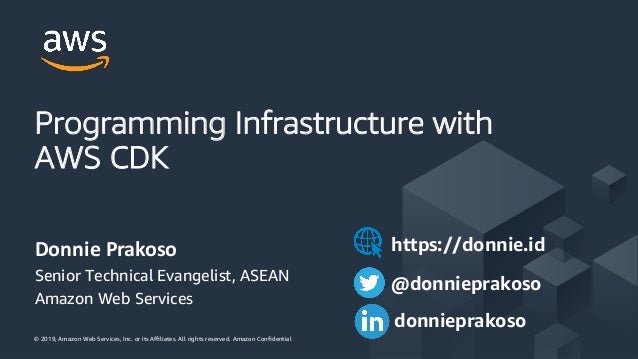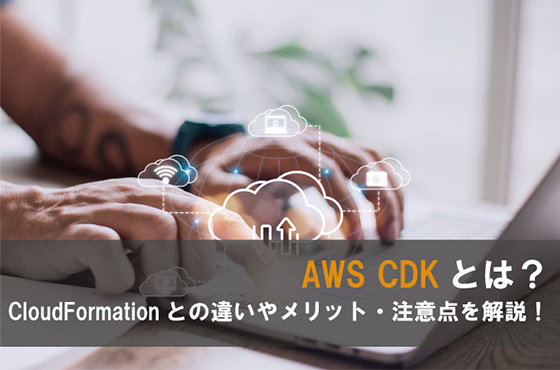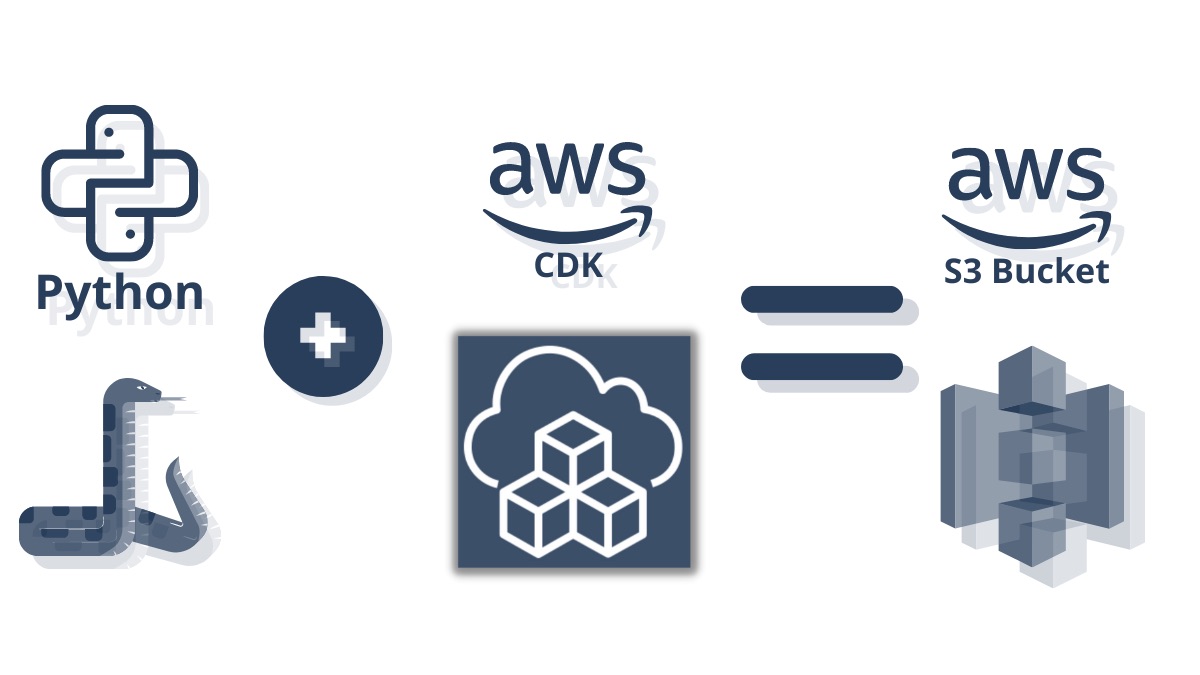What is AWS CDK?
The AWS Cloud Development Kit (CDK) is an open-source software development framework that enables developers to define cloud infrastructure using familiar programming languages. With AWS CDK, developers can manage and provision cloud resources through AWS CloudFormation, improving readability, maintainability, and the ability to create custom resources and constructs. By using AWS CDK, teams can reduce the time spent on manual infrastructure management tasks and focus on delivering value through software development, making the process of defining and managing cloud infrastructure more efficient and accessible.
How AWS CDK Simplifies Infrastructure Management
AWS CDK, or Cloud Development Kit, is an open-source software development framework that enables developers to define cloud infrastructure using familiar programming languages. This approach streamlines infrastructure management in several ways, making it more efficient and manageable for businesses and organizations. Here are some key benefits of using AWS CDK for infrastructure management:
- Use of Familiar Programming Languages: AWS CDK supports various programming languages, such as TypeScript, JavaScript, Python, Java, and C#. By using these languages, developers can leverage their existing skills and knowledge, reducing the learning curve and improving productivity.
- Promoting Code Reuse: AWS CDK allows developers to create reusable components, called constructs, which can be shared and used across different projects and teams. This promotes consistency, reduces redundancy, and enhances collaboration among team members.
- Providing Higher-Level Abstractions: AWS CDK offers higher-level abstractions that simplify the creation and management of complex cloud resources. These abstractions help developers focus on the desired infrastructure outcomes rather than getting bogged down in the intricacies of AWS CloudFormation templates.
- Support for AWS Services and Third-Party Constructs: AWS CDK supports a wide range of AWS services and third-party constructs, making it easier to integrate various tools and platforms into your infrastructure. This flexibility enables developers to build and manage comprehensive cloud environments tailored to their specific needs.
By utilizing AWS CDK, developers can create more readable, maintainable, and extensible infrastructure code, ultimately leading to a more efficient and manageable cloud environment. This is a significant improvement over traditional AWS CloudFormation, which often involves complex YAML or JSON templates that can be difficult to read, debug, and maintain.
AWS CDK Means: Comparing AWS CDK with Traditional CloudFormation
AWS CDK, or AWS Cloud Development Kit, is an open-source software development framework that enables developers to define cloud infrastructure in familiar programming languages and provision it through AWS CloudFormation. This approach differs significantly from traditional CloudFormation, offering several advantages in terms of infrastructure management.
In traditional CloudFormation, developers must use YAML or JSON templates to define their infrastructure. While this method has its merits, such as simplicity and consistency, it can also be cumbersome and challenging to maintain, especially for complex infrastructures. AWS CDK addresses these limitations by providing a more flexible and expressive way to define resources, making it an appealing alternative for many developers.
One of the primary advantages of AWS CDK over traditional CloudFormation is improved readability and maintainability. By using familiar programming languages, such as TypeScript, JavaScript, Python, Java, and C#, developers can create infrastructure code that is more intuitive and easier to understand. This readability leads to better maintainability, as team members can quickly grasp the structure and purpose of the codebase, even if they are not experts in CloudFormation.
Another advantage of AWS CDK is its ability to create custom resources and constructs. In traditional CloudFormation, developers are limited to the built-in resource types provided by AWS. However, with AWS CDK, developers can create higher-level abstractions that encapsulate complex patterns or integrate with third-party services. This capability promotes code reuse and simplifies infrastructure management, as teams can create and share custom constructs tailored to their specific needs.
Additionally, AWS CDK provides a more natural way to manage dependencies between resources. In traditional CloudFormation, developers must explicitly specify dependencies using the ‘DependsOn’ attribute. In contrast, AWS CDK allows developers to define dependencies implicitly through the programming language itself, making the code more concise and easier to manage. This feature is particularly beneficial for complex infrastructures, where managing dependencies manually can be time-consuming and error-prone.
Lastly, AWS CDK offers a more robust development experience compared to traditional CloudFormation. With features like autocompletion, type checking, and debugging support, developers can catch errors early in the development process and ensure their infrastructure code is correct and efficient. This enhanced development experience can lead to faster development cycles and higher-quality infrastructure code.
In conclusion, while traditional CloudFormation remains a viable option for defining and managing AWS infrastructure, AWS CDK offers several advantages that can improve readability, maintainability, and development efficiency. By embracing the power of familiar programming languages and higher-level abstractions, AWS CDK has the potential to revolutionize the way developers approach infrastructure management in the AWS ecosystem.
AWS CDK Programming Languages: Choosing the Right One for Your Project
AWS CDK supports several programming languages, allowing developers to choose the one that best fits their project requirements and team skills. The currently supported languages include TypeScript, JavaScript, Python, Java, and C#. Each language has its unique features and benefits, which can significantly impact the development experience and maintainability of the infrastructure code.
TypeScript
TypeScript is a statically typed superset of JavaScript that adds optional types, classes, and interfaces to the language. TypeScript is an excellent choice for AWS CDK development due to its strong tooling, such as autocompletion, type checking, and advanced refactoring capabilities. These features help developers catch errors early in the development process and ensure their infrastructure code is correct and efficient.
JavaScript
JavaScript is a dynamic, interpreted programming language that is widely used for web development. JavaScript is a natural fit for AWS CDK development, as it enables developers to leverage their existing JavaScript skills to define and manage cloud infrastructure. Additionally, JavaScript’s flexibility and dynamic nature make it well-suited for rapid prototyping and agile development methodologies.
Python
Python is a high-level, interpreted programming language known for its simplicity, readability, and extensive standard library. Python is an excellent choice for AWS CDK development, as it enables developers to create infrastructure code that is concise, expressive, and easy to understand. Python’s extensive ecosystem of third-party libraries and tools also makes it a popular choice for infrastructure automation and DevOps tasks.
Java
Java is a statically typed, object-oriented programming language that is widely used for enterprise-scale applications. Java is a suitable choice for AWS CDK development, as it offers robustness, scalability, and security features that are essential for large-scale cloud infrastructure projects. Java’s extensive ecosystem of libraries, frameworks, and tools also makes it an attractive option for teams that are already familiar with the language.
C#
C# is a statically typed, object-oriented programming language that is widely used for Windows desktop and mobile applications. C# is an excellent choice for AWS CDK development, as it offers a modern and expressive syntax, robust tooling, and a rich ecosystem of libraries and frameworks. C#’s support for asynchronous programming and strong typing also makes it well-suited for complex and concurrent infrastructure tasks.
In conclusion, the choice of programming language in AWS CDK development depends on various factors, such as team skills, project requirements, and personal preferences. By understanding the unique features and benefits of each language, developers can make an informed decision and choose the one that best fits their needs. Regardless of the language chosen, AWS CDK provides a powerful and flexible way to define and manage cloud infrastructure in code, enabling developers to build and operate complex cloud environments with ease and confidence.
Real-World AWS CDK Use Cases: Building and Managing Complex Cloud Infrastructures
AWS CDK has been used in various real-world scenarios to build and manage complex cloud infrastructures for different applications and industries. By providing higher-level abstractions, promoting code reuse, and enabling the use of familiar programming languages, AWS CDK simplifies infrastructure management and enables developers to create custom resources and constructs that meet their specific needs.
Automating Serverless Applications
AWS CDK has been widely used to automate the deployment and management of serverless applications. By using AWS CDK, developers can define their serverless infrastructure in code, including AWS Lambda functions, Amazon API Gateway APIs, and Amazon DynamoDB tables. This approach enables teams to manage their serverless infrastructure as code, promoting version control, collaboration, and repeatability.
Managing Containerized Applications
AWS CDK also supports the deployment and management of containerized applications using AWS Fargate and Amazon Elastic Container Service (ECS). By using AWS CDK, developers can define their container infrastructure in code, including the container definitions, task definitions, and service definitions. This approach enables teams to manage their container infrastructure as code, promoting consistency, scalability, and security.
Building Data Processing Pipelines
AWS CDK has been used to build complex data processing pipelines using AWS Glue, Amazon Kinesis, and AWS Lambda. By using AWS CDK, developers can define their data processing infrastructure in code, including the data sources, data transformations, and data sinks. This approach enables teams to manage their data processing infrastructure as code, promoting automation, scalability, and resilience.
Creating Custom Resources and Constructs
AWS CDK’s support for higher-level abstractions and custom resources enables teams to create custom constructs that encapsulate complex patterns or integrate with third-party services. For example, teams have used AWS CDK to create custom constructs for deploying and managing Kubernetes clusters, managing multi-region deployments, and integrating with external monitoring and logging services.
Industry-Specific Use Cases
AWS CDK has also been used in various industry-specific use cases, such as building and managing cloud infrastructures for healthcare, finance, and retail. For example, healthcare teams have used AWS CDK to build and manage HIPAA-compliant cloud infrastructures, while finance teams have used AWS CDK to build and manage SOC 2-compliant cloud infrastructures.
In conclusion, AWS CDK has been used in various real-world scenarios to build and manage complex cloud infrastructures for different applications and industries. By providing higher-level abstractions, promoting code reuse, and enabling the use of familiar programming languages, AWS CDK simplifies infrastructure management and enables developers to create custom resources and constructs that meet their specific needs. By embracing the power of AWS CDK, teams can build and operate cloud environments with ease and confidence, promoting innovation, agility, and scalability in their infrastructure management practices.
Getting Started with AWS CDK: Installation, Setup, and Your First Infrastructure Stack
To get started with AWS CDK, you need to follow several steps, including installation, environment setup, and creating your first infrastructure stack using a preferred programming language. This guide will walk you through the process, enabling you to start building and managing your cloud infrastructure in code quickly.
Step 1: Install AWS CDK
To install AWS CDK, you need to have Node.js (version 10.3.0 or later) and npm (version 6.9.0 or later) installed on your system. Once you have Node.js and npm installed, you can install AWS CDK using the following command:
“` npm install -g aws-cdk “`
Step 2: Set Up Your Environment
To set up your environment, you need to configure your AWS credentials and create a new AWS CDK project. To configure your AWS credentials, you can use the AWS CLI or the AWS Management Console. Once you have configured your AWS credentials, you can create a new AWS CDK project using the following command:
“` cdk init app –language
Replace
Step 3: Create a Simple Infrastructure Stack
To create a simple infrastructure stack, you can use the AWS CDK construct library, which provides higher-level abstractions for AWS services. For example, you can create a new Amazon S3 bucket using the following TypeScript code:
“`typescript import * as cdk from ‘@aws-cdk/core’; import * as s3 from ‘@aws-cdk/aws-s3’; export class MyStack extends cdk.Stack {
constructor(scope: cdk.Construct, id: string, props?: cdk.StackProps) {
super(scope, id, props);
new s3.Bucket(this, ‘MyBucket’, {
bucketName: ‘my-bucket’
});
}
}
This code creates a new AWS CDK stack and defines a new Amazon S3 bucket named “my-bucket”. Once you have defined your infrastructure stack, you can deploy it using the following command:
cdk deploy
This command provisions your infrastructure in your AWS account using AWS CloudFormation.
In conclusion, getting started with AWS CDK is a straightforward process that involves installation, environment setup, and creating a simple infrastructure stack using a preferred programming language. By following these steps, you can start building and managing your cloud infrastructure in code quickly, taking advantage of the benefits of AWS CDK, such as improved readability, maintainability, and the ability to create custom resources and constructs.
Best Practices for AWS CDK Development: Organizing Code, Managing Dependencies, and Following Security Guidelines
AWS CDK is a powerful tool for defining and managing cloud infrastructure in code. To ensure that your AWS CDK projects are successful, it’s essential to follow best practices for development, such as organizing code, managing dependencies, and following security guidelines. This guide will walk you through these best practices, enabling you to build and manage your cloud infrastructure with confidence.
Organizing Code
Organizing code is crucial for maintaining a readable, maintainable, and scalable AWS CDK project. To organize your code, you can follow these guidelines:
- Use clear and descriptive names for stacks, resources, and constructs.
- Group related stacks, resources, and constructs in separate files and directories.
- Use interfaces, types, and enums to define custom constructs and abstractions.
- Use comments and documentation to explain complex or non-obvious code.
Managing Dependencies
Managing dependencies is essential for ensuring that your AWS CDK project is stable, secure, and up-to-date. To manage dependencies, you can follow these guidelines:
- Use a package manager, such as npm or pip, to manage your dependencies.
- Lock your dependencies to specific versions to ensure reproducibility and stability.
- Use a version control system, such as Git, to track changes and collaborate with your team.
- Use a linter, such as ESLint or Pylint, to enforce coding standards and catch errors early.
Following Security Guidelines
Following security guidelines is crucial for ensuring that your AWS CDK project is secure and compliant. To follow security guidelines, you can:
- Use AWS-provided constructs and abstractions whenever possible.
- Use the principle of least privilege when defining IAM roles and policies.
- Use encryption, such as AWS KMS, for sensitive data at rest and in transit.
- Use VPCs, security groups, and network ACLs to control network access and traffic.
- Use AWS Config, AWS CloudTrail, and AWS Security Hub to monitor and audit your infrastructure.
In addition to these best practices, it’s essential to test and version control your AWS CDK projects. Testing ensures that your infrastructure code is correct, while version control enables you to track changes, collaborate with your team, and roll back changes if necessary.
In conclusion, following best practices for AWS CDK development, such as organizing code, managing dependencies, and following security guidelines, is crucial for ensuring that your AWS CDK projects are successful. By following these best practices, you can build and manage your cloud infrastructure with confidence, taking advantage of the benefits of AWS CDK, such as improved readability, maintainability, and the ability to create custom resources and constructs.
AWS CDK Community and Resources: Forums, Documentation, and Open-Source Projects
AWS CDK is an open-source software development framework for defining and managing cloud infrastructure in code. As with any open-source project, the community and resources available are crucial to its success and growth. This guide will highlight the active AWS CDK community, including forums, documentation, and third-party resources, encouraging readers to engage with the community, contribute to open-source projects, and stay updated on the latest AWS CDK features and improvements.
Forums
Forums are an essential resource for getting help, sharing knowledge, and engaging with the AWS CDK community. The official AWS CDK forum is a great place to start, where you can ask questions, share experiences, and connect with other AWS CDK users and developers. Additionally, there are several third-party forums, such as Stack Overflow and Reddit, where you can find AWS CDK discussions and get help from the community.
Documentation
Documentation is another critical resource for learning and using AWS CDK. The official AWS CDK documentation is comprehensive, well-organized, and easy to navigate. It includes getting started guides, tutorials, API references, and best practices, providing a wealth of information for both beginners and experienced users. Additionally, there are several third-party documentation resources, such as blogs, tutorials, and videos, that can help you learn and master AWS CDK.
Open-Source Projects
Open-source projects are a great way to contribute to the AWS CDK community and improve your skills. There are several open-source projects related to AWS CDK, such as construct libraries, templates, and tools, that you can use, modify, and distribute. By contributing to these projects, you can help improve the AWS CDK ecosystem, learn from other developers, and build your reputation in the community.
Getting Involved
Getting involved in the AWS CDK community is easy and rewarding. Here are some ways to get started:
- Join the official AWS CDK forum and introduce yourself.
- Read the official AWS CDK documentation and try the tutorials.
- Contribute to open-source projects related to AWS CDK.
- Share your experiences and knowledge with the community.
- Stay updated on the latest AWS CDK features and improvements.
In conclusion, the AWS CDK community and resources are active, vibrant, and growing. By engaging with the community, using the documentation, and contributing to open-source projects, you can learn, share, and improve your AWS CDK skills. The AWS CDK community is a great place to connect with other developers, get help, and make a difference. So, get involved and start contributing today!








